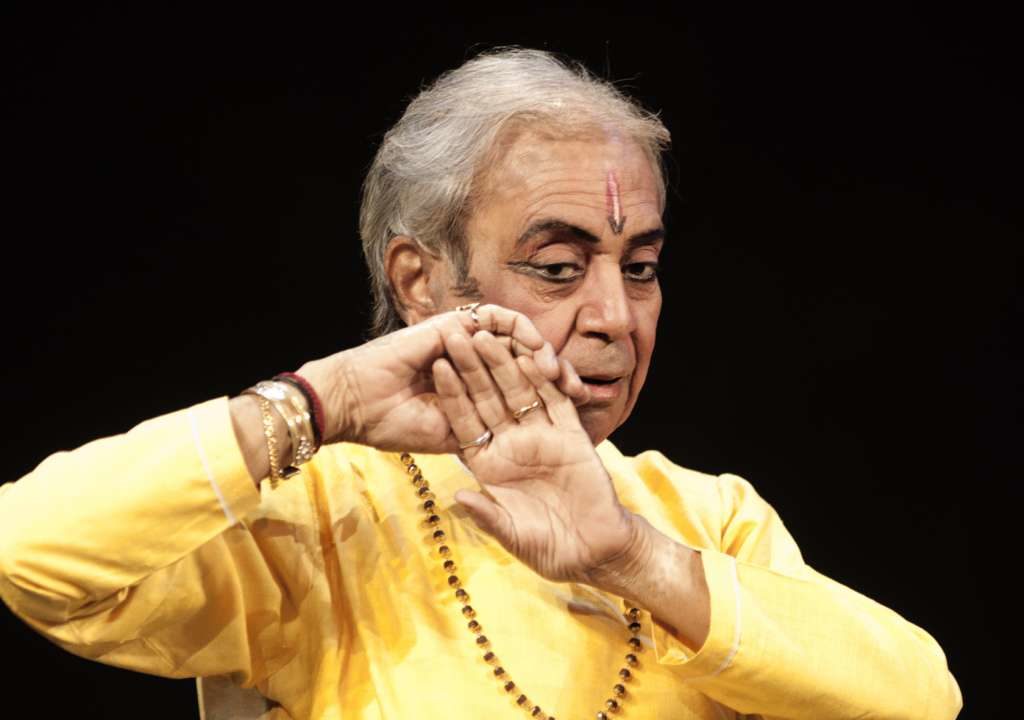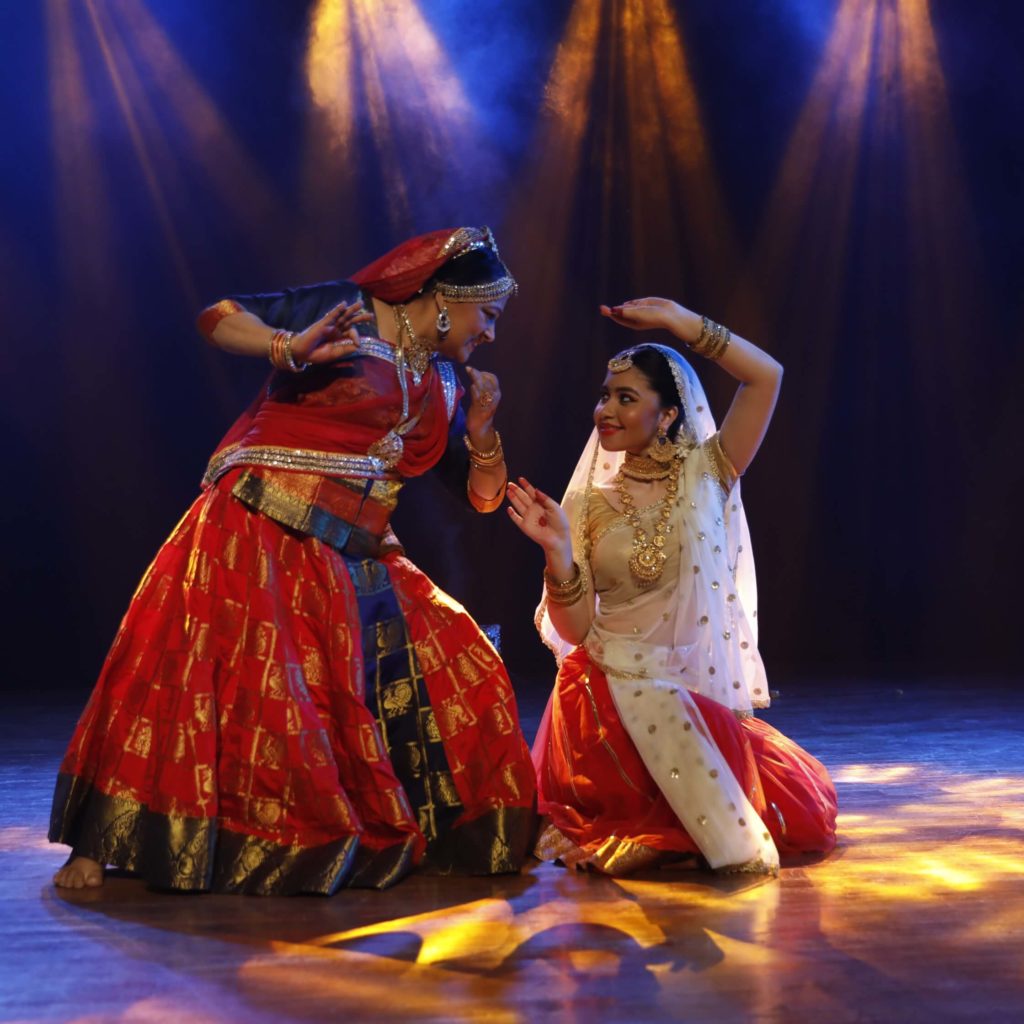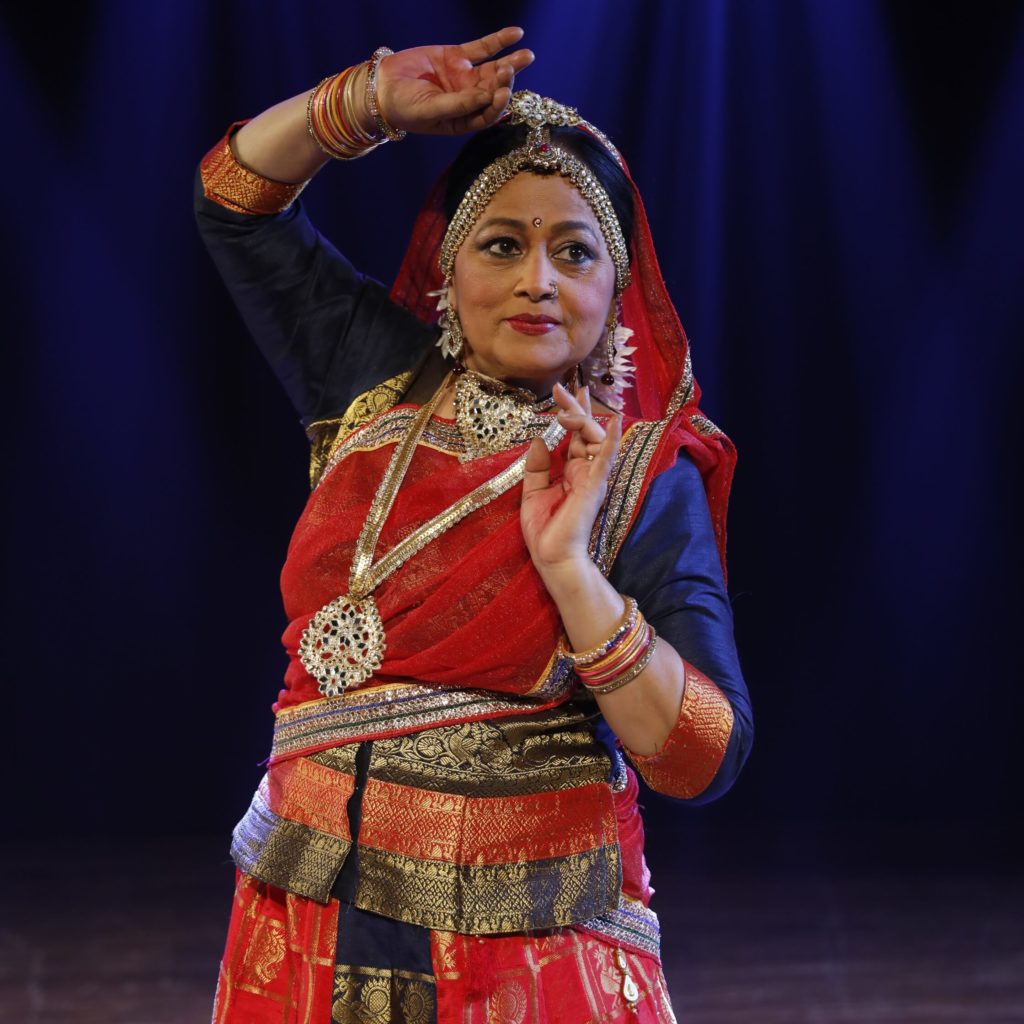The word ‘gharana’ means house. Due to the coming of the British Raj, and the perception of kathak dancers as nautch girls that was held during the Mughal era, kathak gradually declined in the nineteenth century. The traditions and art were, however, kept alive by certain families and passed down orally. This resulted in the formation of three distinct forms of the dance, named after the cities in which they originated: Lucknow, Banaras, and Jaipur.

Lucknow Gharana
The origin of the Lucknow Gharana can be traced back to Sri Ishwar Prasad of Allahabad who claimed that Lord Krishna had visited him in his dreams, asking him to rejuvenate the art of Kathak. It was carried by one of his three sons, Adguji who trained his sons and so on. It gained prominence when it reached the courts of the Nawab of Oudh in Lucknow, Uttar Pradesh, and Mughal rulers, hence Mughal influence is most clearly seen in the dancing style. The great-grandson of Ishwar Prasad, however, was the first to achieve critical acclaim as a dancer, and he was appointed as the ‘Guru’ of Nawab Wajid Ali Shah. His sons Binadin and Kalka carried on his legacy.
Dancing Style
It particularly emphasizes grace, elegance, and naturalness in the dance. It follows the Lasya style (inspired by goddess Parvati). Abhinaya (expressions), bhavas (emotions) acting, especially improvised, plays a very strong role in this style. Thumris are very popular. Birju Maharaj, Shambhu Maharaj, and Lachhu Maharaj are the most famous exponents.

Jaipur Gharana
The Jaipur Gharana developed in the courts of the Kachchwaha kings of Jaipur in Rajasthan. It was founded by Shri Bhanuji who was trained in the Tandava (vigorous dance inspired by Lord Shiva) style by a sage. His grandsons Hanuman Prasad and Hariprasad were known as ‘Devpari’ and received much acclaim; both were appointed to the Jaipur court. The dancers of this Gharana were mostly engaged in the courts of Hindu kings, hence old traditions of the temple dance are preserved through this style.
Dancing Style
Importance is placed on the more technical aspects of dance, such as complex and powerful footwork, multiple spins, and complicated compositions in different talas. There is also greater incorporation of compositions from the pakhawaj, such as parents.

Banaras Gharana
The Benaras Gharana was developed by Janakiprasad, and is often called the Janakiprasad Gharana. He had three main disciples: Chunnilal, Delhi Ram and Ganeshilal, who passed down the dance to their children. Sitara Devi, the daughter of Sukhdev Maharaj is the most famous exponent of this gharana. Today it is headed by her daughter, Jayanti Mala and Gopi Krishna, son of Tara Devi.
Dancing Style
It is characterized by the exclusive use of the natwari or dance bols, which are different from the tabla and the pakhawaj bols. There are differences in the thaat and tatkaar, and chakkars are kept at a minimum but are often taken from both the right- and the left-hand sides with equal confidence. There is also a greater use of the floor, for example, in the taking of sum. Prayers and stories of Lord Krishna and Shiva are used. It imbibes both Tandava and Lasya styles of dancing.

